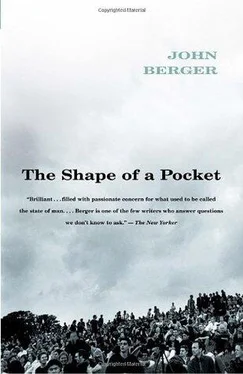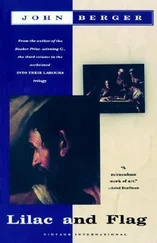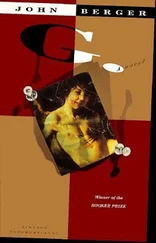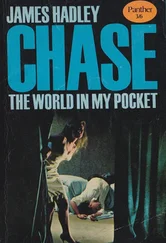A number of listeners have written me letters — for which I thank you — all of them about the way in which dogs communicate. Some of you sent photos to illustrate your experience.
I gave you my opinion last week that the dog is the only animal with an historical sense of time, but that he can never be an historical agent. He suffers history but he can never make it. And then we looked together at the famous painting by Goya on the subject. And we decided it was better to look at paintings on the radio than on the television. On the TV screen nothing is ever still, and this movement stops painting being painting. Whereas on the radio we see nothing, but we can listen to silence. And every painting has its own silence.
A listener from the Black Forest has written to ask whether, after the dog, we might consider the butterfly, and in particular the Anthocaris Cardamines , commonly known as the Fiancée. For this listener — although our principal subject this evening is something altogether different — we have recorded here in the studio the Fiancée in flight. And if you shut the windows and settle in your chair you will now hear the wings of the Anthocaris Cardamines beating in flight.
Every butterfly too has its own special silence. For sometimes a sound is more easily grasped as a silence, just as a presence, a visible presence, is sometimes most eloquently conveyed by a disappearance.
Who does not know what it is like to go with a friend to a railway station and then to watch the train take them away? As you walk along the platform back into the city, the person who has just gone is often more there, more totally there, than when you embraced them before they climbed into the train. When we embrace to say goodbye, maybe we do it for this reason — to take into our arms what we want to keep when they’ve gone.
Excuse me, the telephone has just rung. You can’t hear it, can you? A listener asks what century in God’s name do I think I’m living in? Sounds like the nineteenth, he told me.
No, sir, the one I live in is the sixteenth or the ninth. How many, sir, do you think are not dark? One in seven?
Today everything everywhere on the planet is for sale.
I’m selling. Here’s a back, a man’s working back, not yet broken. Did I hear an offer?
What’s a back for?
To sell wherever they need cheap backs for work.
Bought!
Every evening Goya takes his dog for a walk along the Ramblas.
A heart?
How come?
Sixteen and healthy from Mexico.
OK Taken!
Then man and dog stroll home and Goya draws the curtains and settles down to look at CNN.
A kidney.
Bought!
One male member and a uterus together.
Together how?
They stayed together. They were chased out of their village, they had no land and they were obliged to sell everything to survive.
I’ll take the uterus.
And the male member?
Throw it away, plenty more where it came from.
Difficult — they’re inseparable.
NAFTA! Separate them!
I’m not sure how.
NAFTA! I tell you!
Nafta?
North American Free Trade Agreement.
No sir, I live in this century which I can’t say is ours. And now, if I may, I shall return to the mystery of what makes a presence.
When all the members have been separated and all the parts sold, what is left?
Something more to sell. A whole is more than the sum of its parts, so we sell the personality. A personality is a media-product and easy to sell. A presence is the same thing as personality, no?
Presence is not for sale.
If that’s true, it’s the only thing on this earth which isn’t.
A presence has to be given, not bought.
Three hundred girls from Thailand.
I’ll take them. Ask Melbourne if he’s still interested.
A presence is always unexpected. However familiar. You don’t see it coming, it moves in sideways. In this a presence resembles a ghost or a crab.
He’s let the dog out and the master has gone to sleep.
Once I was in a train travelling to Amsterdam, through Germany, going north following the Rhine. It was a Sunday and I was alone in the compartment and had been travelling for several hours. With me I had a cassette player and so I decided to listen to some music. Beethoven’s one-from-last piano sonata. A man stops in the corridor and peers into the compartment. He makes a sign with his hands to enquire if he can open the door. I slide the door open. Come in, I say. He puts a finger to his lips, sits down and slides the door shut. We listen. When the sonata ends, there’s only the noise of the train … He’s a man of about my age but better dressed and with an attaché case. From it he takes out a sheet of paper, writes some words on it and hands the paper to me. ‘Thank you,’ I read, ‘for allowing me to listen with you.’ I smile, nod and know that I should not speak. We sit there silently in the presence of the last movement of the sonata. This is how a presence makes itself felt.
An hour later when a vendor came down the corridor selling coffee and sandwiches, my travelling companion pointed to what he wanted and I understood that he was dumb, that he could not speak.
Excuse me, the telephone again. A listener wants to know: Who was the pianist?
Piotr Anderszewski.
That’s not true. Why do you lie?
Because Piotr is a friend of mine. He plays marvellously, sometimes he plays with his sister, Dorothea, who is a violinist, he comes from Poland, he’s poor and he’s already twenty-six and soon — such is the competition on the concert circuit — soon it will be too late, for ever too late, for him to be recognised for the great pianist he is. So I lied to help him. Piotr. If I keep quiet, I can hear him playing the Diabelli Variations.
On my way here to the radio station this evening I passed a photography shop. In their window they have a notice that says: IDENTITY PHOTOS WITH A TRUE LIKENESS — READY IN TEN MINUTES!
To talk of a likeness is another way of talking of a presence. With photos the question of likeness is incidental. It’s merely a question of choosing the likeness you prefer. With a painted or drawn portrait likeness is fundamental; if it’s not there, there’s an absence, a gaping absence.
The dog is now asking to be let in. The master gets up, opens the door and, instead of returning to bed, goes to his easel on which there is an unfinished painting.
You can’t hunt for a likeness. It can escape even a Raphael… Strangely, you can tell whether a likeness is there or not when you’ve never set eyes on the model or seen any other image of the model. For example, in Raphael’s portrait of a woman known as La Mata, the dumb one, there is an astounding likeness. You can hear it.
By contrast, in Raphael’s double portrait of himself and a friend, painted in 1517, there’s no likeness present at all. This time it’s a silence without any life in it. Enough to compare this silence with the Fiancée beating her wings, for us to feel the gaping absence.
There’s a village. A Kurdish mountain village in Eastern Anatolia. One night a wolf comes and kills many chickens and ravishes a lamb. Next morning everyone leaves the village, the men with rifles, the women with dogs and the children with sticks. It is not the first time this has happened and they know what to do. They are going to encircle the wolf. Slowly the circle closes, getting smaller, with the wolf in the middle. Finally it’s no larger than a small room. The dogs are growling. The men are holding their ropes and rifles and the end is very near. So what do they do? Wait! They slip a cord over the wolfs neck and attached to the cord is a bell! Then they disperse and let the wolf go free …
You can’t set out to trap a likeness. It comes on its own or it doesn’t, a likeness. It moves in sideways.
Читать дальше












